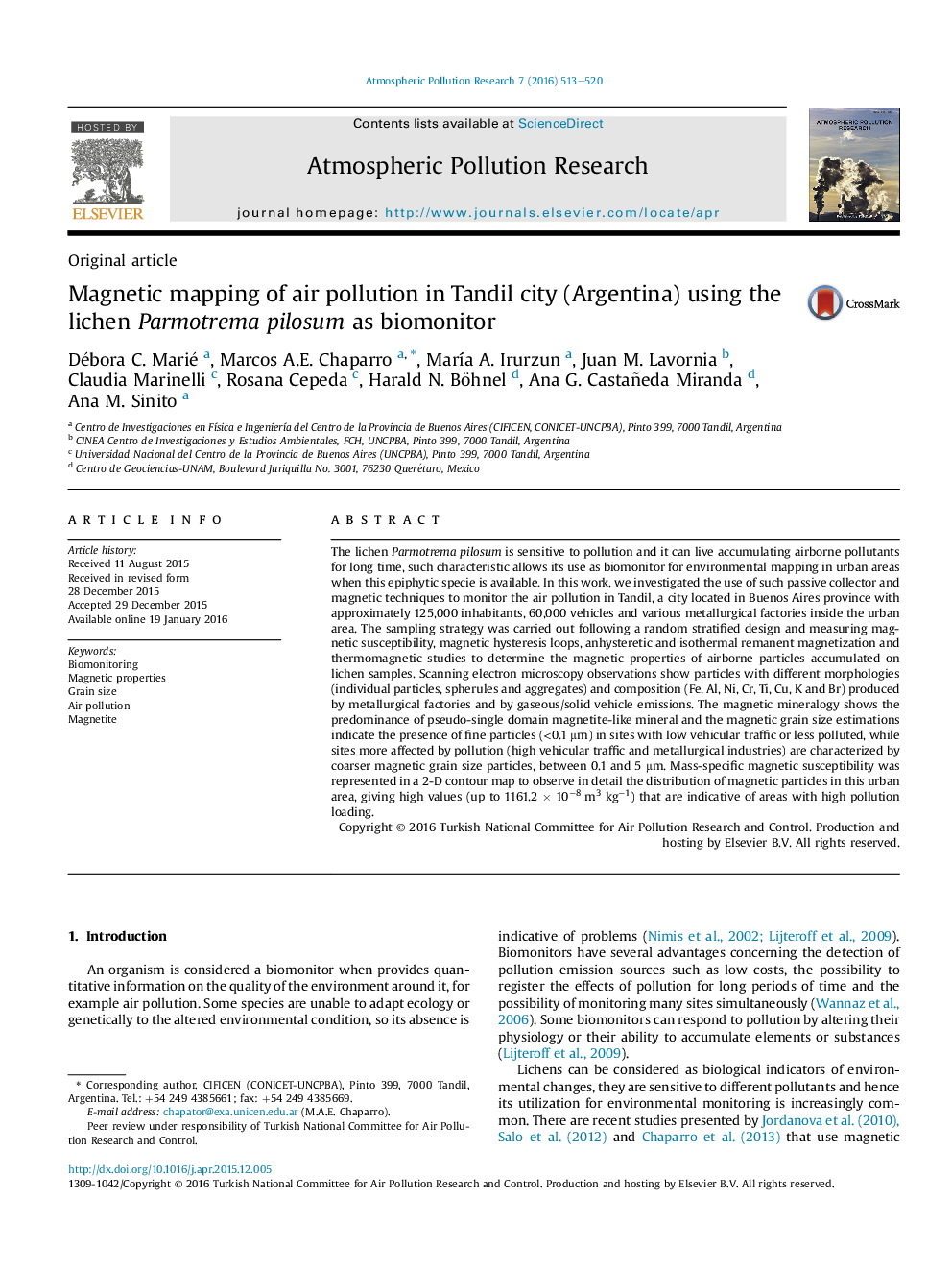| Article ID | Journal | Published Year | Pages | File Type |
|---|---|---|---|---|
| 4434532 | Atmospheric Pollution Research | 2016 | 8 Pages |
•Lichen Parmotrema pilosum is a suitable air pollution monitor.•Magnetite-like minerals produced by traffic and metallurgical factories are accumulated in lichen samples.•More impacted (polluted) areas are identified using magnetic concentration and grain size dependent magnetic parameters.
The lichen Parmotrema pilosum is sensitive to pollution and it can live accumulating airborne pollutants for long time, such characteristic allows its use as biomonitor for environmental mapping in urban areas when this epiphytic specie is available. In this work, we investigated the use of such passive collector and magnetic techniques to monitor the air pollution in Tandil, a city located in Buenos Aires province with approximately 125,000 inhabitants, 60,000 vehicles and various metallurgical factories inside the urban area. The sampling strategy was carried out following a random stratified design and measuring magnetic susceptibility, magnetic hysteresis loops, anhysteretic and isothermal remanent magnetization and thermomagnetic studies to determine the magnetic properties of airborne particles accumulated on lichen samples. Scanning electron microscopy observations show particles with different morphologies (individual particles, spherules and aggregates) and composition (Fe, Al, Ni, Cr, Ti, Cu, K and Br) produced by metallurgical factories and by gaseous/solid vehicle emissions. The magnetic mineralogy shows the predominance of pseudo-single domain magnetite-like mineral and the magnetic grain size estimations indicate the presence of fine particles (<0.1 μm) in sites with low vehicular traffic or less polluted, while sites more affected by pollution (high vehicular traffic and metallurgical industries) are characterized by coarser magnetic grain size particles, between 0.1 and 5 μm. Mass-specific magnetic susceptibility was represented in a 2-D contour map to observe in detail the distribution of magnetic particles in this urban area, giving high values (up to 1161.2 × 10−8 m3 kg−1) that are indicative of areas with high pollution loading.
